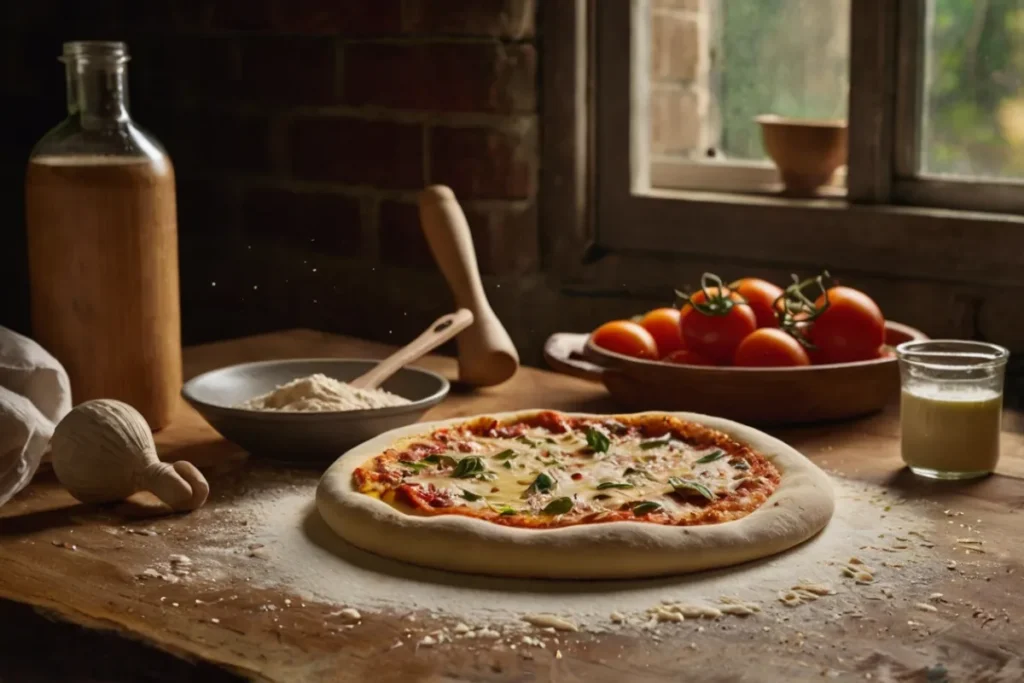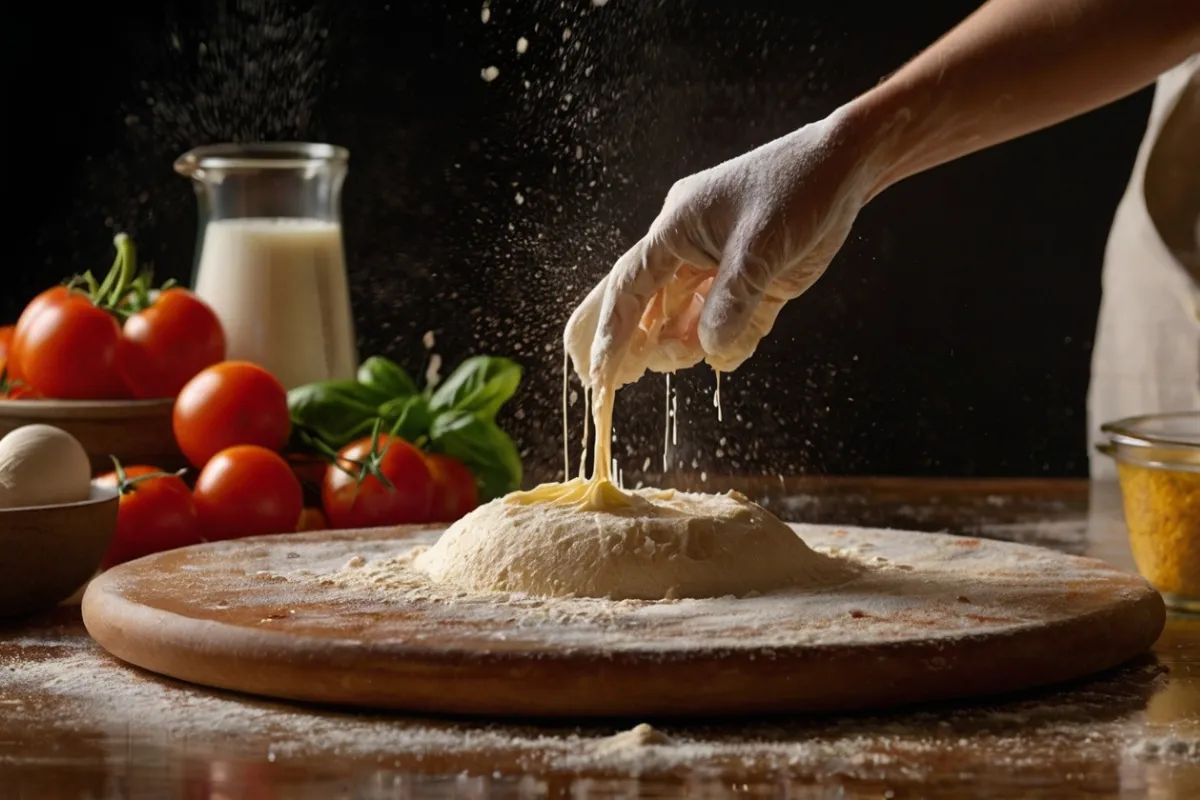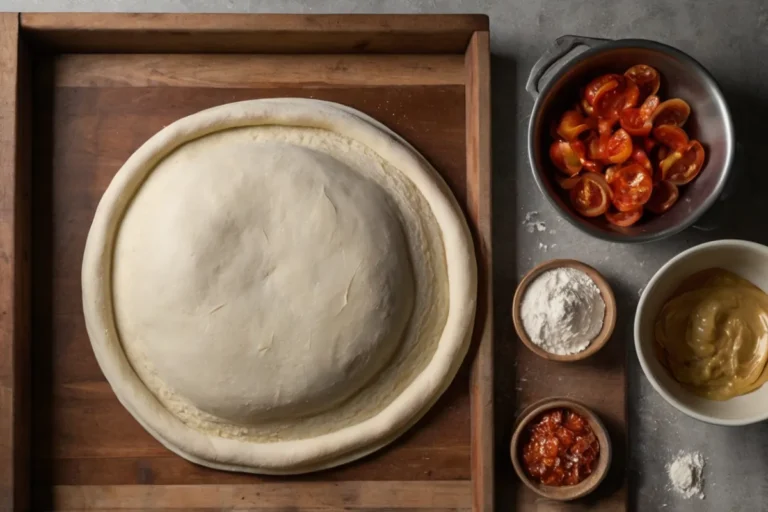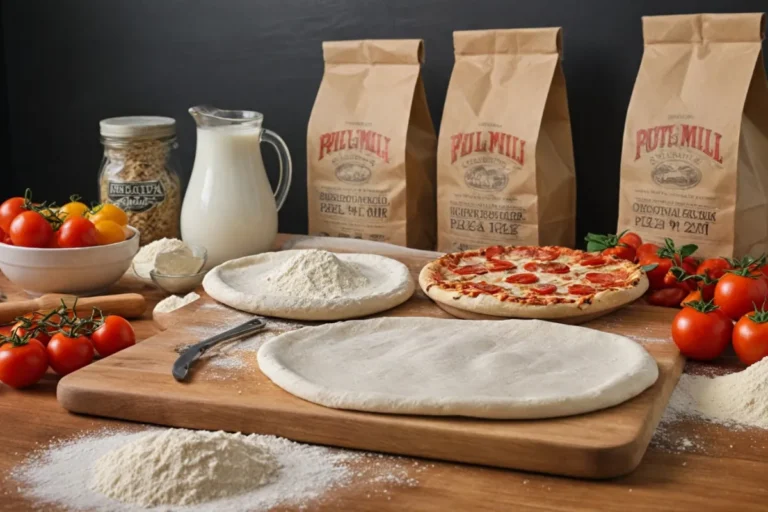Elevate Your Pizza Game with the Best Poolish Pizza Dough Recipe
Elevate Your Pizza Game with the Best Poolish Pizza Dough Recipe
Imagine pulling a golden, crispy pizza out of your oven, the crust perfectly airy and chewy, with a flavor that immediately transports you to a bustling pizzeria in Italy. That experience doesn’t have to stay a dream. By incorporating poolish into your pizza dough, you can elevate your homemade pizza to extraordinary heights. Whether you’re a home baker looking to refine your pizza-making skills or someone just getting started, this guide will walk you through the process of creating the best poolish pizza dough recipe. You’ll discover not only how to make it but also why poolish works so well for crafting the perfect pizza dough, and how you can tweak it to suit your taste.
What Is Poolish Pizza Dough?
Before we dive into the recipe, it’s important to understand what poolish is and why it’s a game-changer for pizza dough. Poolish is a type of pre-fermentation method that involves mixing equal parts flour and water with a small amount of yeast. The mixture sits at room temperature for an extended period—usually 12 to 16 hours—before being added to the final dough.
This method is a staple in French baking but has been adopted by many pizza makers for its ability to enhance flavor and texture. The key benefit of poolish is that it allows the dough to ferment slowly, which leads to a more flavorful and aromatic crust. The extended fermentation process allows natural yeast and bacteria to break down the starches in the flour, resulting in a more digestible and flavorful pizza crust. The dough will also have a slightly tangy, complex flavor that makes every bite stand out.
Why Should You Use Poolish for Pizza Dough?
When compared to traditional pizza dough methods, poolish provides several distinct advantages. First, it enhances the flavor of the dough, making it more complex and rich. The yeast in the poolish works slowly, allowing the dough to develop flavors that can’t be achieved with quicker fermentation techniques. Additionally, poolish improves the dough’s texture by increasing hydration, leading to a lighter, airier crust with the perfect amount of chew.
Not only does poolish help with flavor and texture, but it also increases the dough’s elasticity. This makes it easier to shape the dough without worrying about it tearing. The result is a crust that is crisp on the outside and perfectly chewy on the inside.
Ingredients for the Best Poolish Pizza Dough
Now that you understand why poolish is so effective, let’s talk about the ingredients you’ll need to make the best pizza dough. While the ingredient list is relatively simple, the quality of each one plays a significant role in the final outcome.
| Ingredient | Measurement | Purpose |
|---|---|---|
| High-protein flour | 500g | Provides the dough with structure and elasticity |
| Water | 350ml | Hydrates the dough, activating the yeast |
| Yeast | 1 tsp | Powers the fermentation process |
| Salt | 10g | Controls yeast activity and enhances flavor |
Choosing the Right Ingredients
- Flour: Use high-protein flour (such as bread flour) for the best results. The higher protein content allows for better gluten development, which is essential for a chewy pizza crust. If you want to experiment, you can also use a mix of bread flour and whole wheat flour for added depth of flavor.
- Water: The water should be lukewarm, ideally around 40°C (104°F). Too hot, and you risk killing the yeast; too cold, and the yeast won’t activate properly.
- Yeast: Both active dry yeast and instant yeast work well in poolish. However, instant yeast tends to be more reliable because it doesn’t require proofing. Just mix it directly into the flour for ease.
- Salt: Always use fine sea salt for consistent flavor throughout the dough. Salt not only enhances flavor but also slows down the yeast fermentation, allowing for a longer rise and more developed flavors.

Step-by-Step Instructions for Poolish Pizza Dough
Making poolish pizza dough is a straightforward process, but it requires patience. The extended fermentation time is what transforms ordinary dough into something extraordinary. Here’s a step-by-step guide to help you through it.
Day 1: Preparing the Poolish
- Mix the Ingredients: In a bowl, combine 250g of flour, 250ml of water, and 1/4 tsp of yeast. Stir the ingredients until well combined, making sure there are no dry spots. The mixture should resemble a thick batter.
- Let It Rest: Cover the bowl loosely with plastic wrap or a damp towel, and let it sit at room temperature for 12-16 hours. The poolish will ferment and bubble up, creating a slightly tangy aroma. If you see bubbles or small pockets of air, it’s ready.
Day 2: Mixing the Dough
- Combine the Ingredients: Add the remaining 250g of flour, 100ml of water, 1 tsp of yeast, and 10g of salt to the poolish mixture. Mix until the dough comes together, then knead for about 8-10 minutes until smooth and elastic.
- First Rest: Transfer the dough to a lightly oiled bowl, cover it, and let it rest for about 1 hour. This allows the dough to rise and develop some structure.
- Stretch and Fold: After the first rest, perform two sets of stretch-and-folds. To do this, pull one side of the dough out, fold it over the center, and repeat on all four sides. This technique strengthens the gluten and ensures an even rise.
Final Proofing and Shaping
- Divide the Dough: Once the dough has risen, divide it into 2-3 portions, depending on the size of the pizzas you want to make.
- Shape the Dough: Roll each portion into a smooth ball. Let them rest for 1-3 hours, or until the dough feels light and airy. You should be able to gently press a finger into the dough and see the indentation remain.
- Stretch and Bake: Once the dough has proofed, stretch it out to your desired pizza size. Top with your favorite ingredients and bake at 250°C (480°F) for 8-10 minutes, or until the crust is golden and crispy.
Tips for Perfect Poolish Pizza Dough Every Time
Achieving the perfect poolish pizza dough takes practice, but these tips will help you get there faster.
- Temperature Control: Keep your kitchen at a consistent temperature of 22-24°C for optimal fermentation. Too hot or too cold, and your dough might not rise as expected.
- Hydration Levels: Depending on the type of flour you use, you may need to adjust the water levels. Softer flours absorb less water, while stronger flours need more to achieve the right consistency.
- Kneading and Folding: Don’t skip the kneading and stretch-and-fold steps. These techniques develop the gluten structure and help the dough hold its shape while baking.
- Oven Preheating: For the crispiest crust, preheat your oven and pizza stone for at least 45 minutes before baking. This ensures that the heat is evenly distributed and the dough cooks quickly.
Nutritional Information for Poolish Pizza Dough
If you’re mindful of nutrition, here’s an approximate breakdown of the ingredients in poolish pizza dough.
| Nutrient | Amount per 100g |
|---|---|
| Calories | 270 kcal |
| Protein | 9g |
| Carbohydrates | 56g |
| Fat | 1g |
This is based on the dough alone, without any toppings. While pizza dough is not a low-calorie food, it is a great source of energy due to its carbohydrate content, and the high-protein flour provides a satisfying, filling crust.
Common Pitfalls and How to Avoid Them
Even experienced bakers can run into trouble when making poolish pizza dough. Here are a few common mistakes and how to avoid them:
- Over-fermenting the Poolish: If your poolish ferments for too long, it can become overly sour or collapse. Stick to the recommended 12-16 hours, and check it periodically to ensure it’s bubbling and fragrant but not overly tangy.
- Not Preheating the Oven: A cold oven will result in a lackluster crust. Always preheat your oven and pizza stone for at least 45 minutes to get the best results.
- Using the Wrong Flour: If you use low-protein flour, your dough will be weak and prone to tearing. Choose bread flour or a similar high-protein flour for the best texture.
Customizing Your Poolish Pizza Dough Recipe
Poolish pizza dough is highly customizable. Here are some ways to make it your own:
- Whole Wheat Version: Substitute up to 50% of the bread flour with whole wheat flour for a nuttier, more rustic flavor.
- Herb-Infused Dough: Add garlic powder, oregano, or dried basil to the flour for an herby kick.
- Sourdough Poolish: Swap part of the yeast for a sourdough starter for a more tangy, complex flavor.
FAQs About Poolish Pizza Dough Recipe
Can I make poolish pizza dough without yeast?
You can, but the results will be different. Using a sourdough starter or skipping the yeast entirely will give you a more distinct, tangy flavor, but the dough will take longer to rise.
How long can I store poolish in the fridge?
Poolish can be stored in the fridge for up to 3 days. Let it come to room temperature before using it in your dough recipe.
How do I know when my poolish is ready?
A ready poolish will have visible bubbles, a slightly domed top, and a mildly tangy aroma. If it has risen and smells fresh, it’s good to go.
Conclusion: Transform Your Pizza Game with Poolish
Now that you have all the tools to create the best poolish pizza dough recipe, it’s time to get baking! The slow fermentation process may take some patience, but the result is a pizza crust that is light, chewy, and bursting with flavor. Whether you’re making a simple Margherita or loading your pizza with toppings, poolish gives you a superior dough that will elevate your pizza game to a whole new level. Ready to wow your friends and family with your pizza-making skills? Get started with poolish today and savor the difference in every bite!







